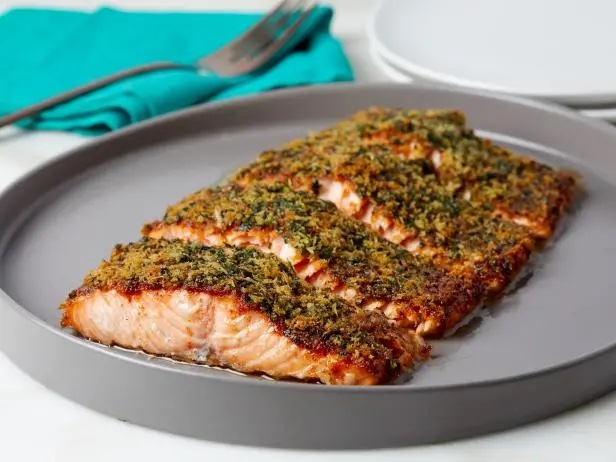Salmon is a versatile and nutritious fish that offers a plethora of culinary possibilities. Its rich flavor and tender texture make it a favorite among chefs and home cooks alike. However, cooking salmon to perfection can be a bit challenging if you’re unsure of the best methods. In this comprehensive guide, we’ll explore various techniques to cook salmon, providing you with tips and recipes to achieve a delicious and perfectly cooked dish every time.
Understanding Salmon: Types and Cuts
Before diving into cooking methods, it’s essential to understand the different types of salmon and their cuts:
- Types of Salmon:
- Atlantic Salmon: Typically farmed and known for its mild flavor and high-fat content.
- Pacific Salmon: Includes species like Sockeye, Coho, King (Chinook), and Pink. These are generally wild-caught and vary in flavor and fat content.
- Cuts of Salmon:
- Fillets: These are boneless and typically cut from the side of the fish. They are great for grilling, pan-searing, and baking.
- Steaks: Cut from the cross-section of the fish and may contain bones. They are ideal for grilling or broiling.
- Whole Salmon: Cooking a whole salmon can be impressive for special occasions and is usually roasted or grilled.
Cooking Methods for Salmon
- Pan-Seared Salmon
Method: Pan-searing is a quick and easy way to cook salmon, resulting in a crispy skin and tender interior.
Instructions:
- Preparation: Pat the salmon fillets dry and season them with salt and pepper. For added flavor, you can marinate the fish in olive oil, garlic, and herbs.
- Cooking: Heat a non-stick or cast-iron skillet over medium-high heat. Add a small amount of oil (such as olive or vegetable oil). Place the salmon skin-side down in the pan and cook for about 4-5 minutes until the skin is crispy. Flip the fillets and cook for an additional 2-3 minutes or until the salmon reaches your desired doneness.
Tips:
- Avoid moving the salmon too much while cooking to ensure a crispy skin.
- Use a fish spatula for easy flipping.
- Baked Salmon
Method: Baking is a hands-off approach that allows for even cooking and can be enhanced with various seasonings and toppings.
Instructions:
- Preparation: Preheat your oven to 375°F (190°C). Line a baking sheet with parchment paper or lightly grease it. Place the salmon fillets on the baking sheet and season with salt, pepper, and your choice of herbs or spices. You can also add a squeeze of lemon juice or a drizzle of olive oil.
- Cooking: Bake the salmon for 12-15 minutes, depending on the thickness of the fillets. The salmon should flake easily with a fork when done.
Tips:
- For added flavor, top the salmon with a mixture of breadcrumbs and herbs before baking.
- Use a meat thermometer to ensure the internal temperature reaches 145°F (63°C).
- Grilled Salmon
Method: Grilling imparts a smoky flavor and is perfect for outdoor cooking.
Instructions:
- Preparation: Preheat your grill to medium-high heat. Clean and oil the grill grates to prevent sticking. Season the salmon with salt, pepper, and your favorite marinades.
- Cooking: Place the salmon on the grill, skin-side down. Grill for 4-6 minutes per side, depending on the thickness. Avoid pressing down on the salmon to retain its juices.
Tips:
- Use a grill basket or aluminum foil to prevent smaller pieces from falling through the grates.
- Keep the lid closed while grilling to maintain an even temperature.
- Poached Salmon
Method: Poaching is a gentle cooking method that keeps the salmon moist and tender.
Instructions:
- Preparation: Fill a skillet or saucepan with enough water (or a mixture of water and white wine) to cover the salmon. Add aromatics like lemon slices, dill, and garlic to the water.
- Cooking: Heat the liquid to a simmer (not a boil). Add the salmon fillets and cook for about 10-15 minutes, or until the salmon is opaque and flakes easily.
Tips:
- Keep the water at a simmer to avoid toughening the fish.
- Poached salmon can be served warm or cold, making it versatile for different dishes.
- Broiled Salmon
Method: Broiling cooks the salmon quickly and provides a slightly charred, flavorful exterior.
Instructions:
- Preparation: Preheat your broiler and position the oven rack about 6 inches from the heating element. Line a baking sheet with foil and lightly oil it. Season the salmon fillets and place them on the prepared sheet.
- Cooking: Broil the salmon for 6-10 minutes, depending on the thickness. The top should be nicely browned and the fish should flake easily with a fork.
Tips:
- Watch the salmon closely to avoid burning.
- Marinate the salmon beforehand to enhance its flavor.
Common Mistakes to Avoid
- Overcooking: Salmon is best enjoyed when cooked to medium or medium-rare. Overcooking can result in a dry, tough texture. Use a meat thermometer or test the fish with a fork to ensure it’s cooked perfectly.
- Underseasoning: Salmon can be bland if not properly seasoned. Don’t be afraid to use a variety of herbs, spices, and marinades to enhance its flavor.
- Ignoring Skin: The skin of the salmon can be deliciously crispy when cooked properly. If you prefer not to eat the skin, it can still add flavor and texture to the dish.
Cooking salmon to perfection involves selecting the right method based on your preferences and desired outcome. Whether you choose to pan-sear, bake, grill, poach, or broil, each technique offers unique benefits and flavors. By understanding the various methods and following the tips provided, you can elevate your salmon dishes and enjoy this nutritious fish in its most delicious form. Experiment with different techniques and seasonings to find your personal favorite and make the most of this versatile ingredient.















